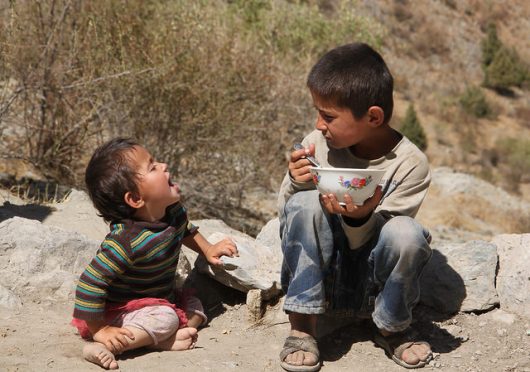10 Facts About Hunger in Tajikistan

Tajikistan, a landlocked country in Central Asia, is home to roughly eight million people. Despite having very little arable land and being prone to natural disasters, Tajikistan’s economy is agriculture-based, which has contributed to the country’s high rates of poverty. Here are 10 facts about hunger in Tajikistan.
10 Facts About Hunger in Tajikistan
- Hunger in Tajikistan is widespread. Approximately 33.2 percent of the population is undernourished.
- Poverty rates are high in Tajikistan. 47 percent of the population lives on less than 1.33 dollars a day and 17 percent survive on less than 0.85 dollars a day.
- Due to poverty and high food prices, food accounts for a large portion of household expenses. The majority of the population spends between 70 and 80 percent of their household income on food.
- Tajikistan has the highest malnutrition rate among the former Soviet republics.
- Tuberculosis (TB) is widespread in Tajikistan. Areas with high rates of poverty have especially high rates of TB with multidrug-resistant strains.
- Even though agriculture employs 75 percent of the population, rural families suffer the most. Only 24 percent of the rural population is food secure. This is due to recurrent natural disasters, deforestation, soil erosion and droughts.
- Organizations such as the United States Agency for International Development (USAID) provide training and resources to farmers in Tajikistan in order to help them improve agricultural efficiency and better understand their land-use rights. This gives them more control over which crops to plant and helps ensure that their land won’t be taken away from them.
- Children are disproportionately affected. Approximately 10 percent of children under five suffer from acute malnutrition and 26 percent from chronic malnutrition.
- In order to combat child hunger in Tajikistan, the World Food Programme’s School Meal Programme supplies free food to children who attend school. The program provides food to over 60 percent of schools in the country, which has increased school attendance.
- Due to Tajikistan’s susceptibility to crises caused by climate change, the country’s government, with support from the World Food Programme, has been working to implement hunger solutions to help support communities and improve food security in times of disaster. These solutions include improving infrastructure and reducing the county’s food-deficit.
While poverty and hunger rates in Tajikistan are still high, programs aimed at improving the country’s resilience towards natural disasters and agricultural productivity show promise in reducing hunger in Tajikistan.
– Alexi Worley
Photo: Flickr
